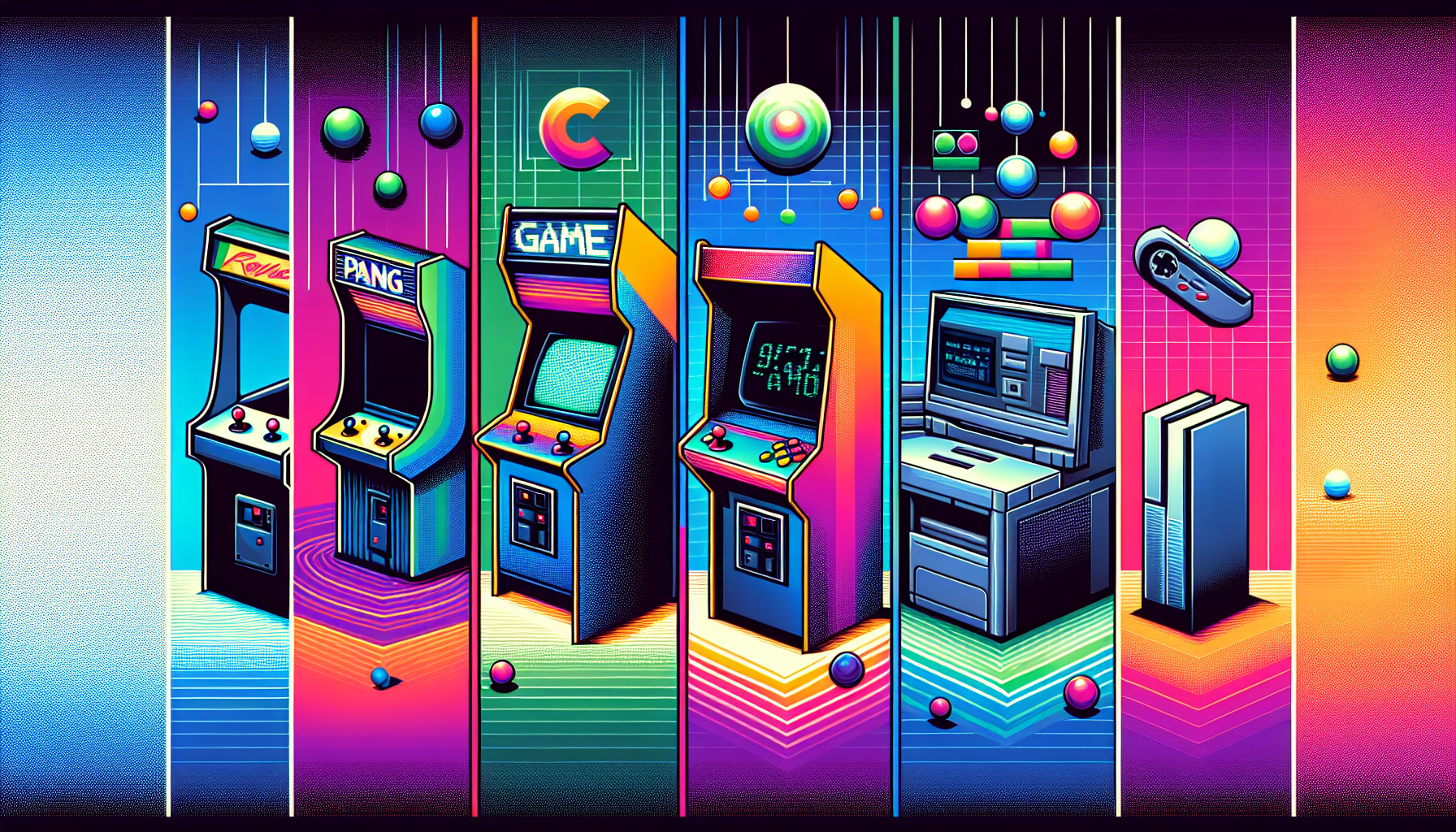Gaming
From Pong to Profit: The Evolution of the Video Game Industry

If you’ve ever experienced the joy of gaming, you’re probably aware that it’s more than just pressing buttons on a controller. It’s a cultural phenomenon, an industry powerhouse, and a passion that spans generations! In this post, we’re diving deep into the alluring evolution of the video game industry, from humble beginnings with ‘Pong’ to a billion-dollar entertainment empire. Grab your snacks—we’ve got a journey to take!
The Birth of Gaming: Pong and the ‘70s
Let’s set the stage: It’s the early 1970s, and arcade culture is just starting to sprout. Enter Pong, a simple game where two players control paddles and try to bounce a ball back and forth. While graphically unimpressive by today’s standards, Pong was revolutionary. It marked the dawn of a new era in interactive entertainment.
The Impact of Pong
- Instant Hit: Within a year, Pong was everywhere, turning into a pop-culture icon.
- Revenue: The game reportedly raked in over $1 million in its first year alone!
Not only did it crank up the fun meter, but it set the stage for an industry hungry for growth. By the late ‘70s, other arcade games like Space Invaders and Asteroids would soon join the ranks, further capturing players’ imaginations.
The ’80s Golden Age: Consoles to the Rescue
As arcades became increasingly popular, another significant player entered the scene: home consoles. The introduction of systems like the Atari 2600 in 1977 allowed people to bring the gaming experience right into their living rooms.
Rise of the Home Console
- Mario Mania: In 1981, Nintendo introduced Donkey Kong with the iconic character Mario, signaling a shift towards story-driven gameplay.
- Market Boom: The home gaming market exploded, contributing significantly to the industry’s revenue.
However, the market eventually became saturated, leading to the infamous video game crash of 1983. Too many poorly developed games flooded the market, causing a consumer backlash. But not for long!
The Revival: Nintendo and Sega Clash
Fast forward to the mid-’80s! The industry begins to rebound with the release of the Nintendo Entertainment System (NES) in 1985. This was like a phoenix rising from the ashes!
Key Highlights
- Nintendo’s Strategy: They introduced rigorous quality control for games, ensuring that only the best made it to shelves. This move rebuilt consumer trust.
- Sega Steps In: With the Sega Genesis launched in 1989, competition heated up. Who could forget Sonic the Hedgehog?
This rivalry kicked off an entire era filled with colorful characters, epic battles, and unforgettable experiences.
The ‘90s: 3D Gaming and Online Play
By the ‘90s, the technological landscape was evolving rapidly—cue the arrival of 3D graphics with systems like the Sony PlayStation in 1994 and the Nintendo 64 in 1996.
A Game Changer
- Graphics Upgrade: Suddenly, games like Final Fantasy VII and The Legend of Zelda: Ocarina of Time offered immersive worlds and compelling narratives.
- Internet Revolution: Online gaming started gaining traction. Titles like Doom and Quake pioneered multiplayer experiences that connected gamers across the globe.
This decade was like the wild west of innovation and creativity!
The 2000s: Mobile & Casual Gaming Takes Off
As the new millennium dawned, technology continued to advance. The introduction of smartphones changed everything. Who would’ve guessed that gaming could fit in our pockets?
Key Developments
- Casual Games Rise: Games like Angry Birds and Candy Crush captured the hearts of casual gamers, proving that you don’t have to be a hardcore gamer to enjoy a good challenge.
- Consoles Evolve: Platforms like Xbox Live and PlayStation Network transformed gaming into a social experience, enabling players to compete and cooperate online.
The video game industry was now not just about making money, but also about building communities.
The Age of Esports and Streaming
Hold onto your controllers—because we’ve entered the era of esports! As competitive gaming began to flourish in the 2010s, players like League of Legends and Dota 2 emerged as fan-favorite titles.
Why Esports?
- Massive Audiences: Esports tournaments filled stadiums and attracted millions of online viewers, turning players into rockstars!
- Revenue Growth: According to Statista, the global esports market is projected to hit 1.5 billion dollars by 2023.
Streaming platforms like Twitch also became virtual arenas where players showcase their skills, making gaming more accessible and entertaining.
Today’s Landscape: VR, AR, and Beyond
We’re now riding the wave of virtual reality (VR) and augmented reality (AR), changing the way people interact with games. Have you tried Beat Saber or Pokémon GO yet? They are redefining immersion!
What’s Next?
- Innovation Continues: Companies are investing in VR headsets, and immersive experiences are becoming the norm.
- Diversity in Gaming: As the industry matures, there’s a growing focus on inclusivity, showcasing stories from diverse backgrounds.
We live in a spectacular time for gaming—years of evolution have led us to this vibrant, dynamic landscape.
Final Thoughts: The Future Looks Bright
From the pixelated screens of Pong to the stunning graphics of today, the video game industry has undergone a colossal transformation, continually pushing the bounds of creativity and technology. Whether you’re a casual player or an elite gamer, it’s clear that gaming isn’t just a hobby—it’s a cultural cornerstone.
So, what’s your favorite gaming memory? Do you think the industry will continue to grow, or is it leveling out? Let’s chat in the comments!
For more on gaming culture, check out our Gaming Trends section for the latest updates. If you’re interested in the psychological impacts of gaming, don’t miss our article Gaming and Mental Health.
In the end, this journey is far from over. The next big thing in the gaming universe could be just around the corner!
-

 News21 hours ago
News21 hours agoTeenage US Citizen Records Brutal Arrest by Immigration Agents Who Told Him, ‘You Have No Rights’
-
News20 hours ago
Maltese Police Officers Participate in Operation in the Black Sea
-

 Business21 hours ago
Business21 hours agoNavigating the Economic Landscape: Key Insights from Today’s Business Headlines
-

 News19 hours ago
News19 hours ago“Honoring Ukraine: A Tribute” (July 26, 2025) — dynamo.kiev.ua
-

 Entertainment21 hours ago
Entertainment21 hours agoCinematic Success: Fun Facts About Movies That Shaped the Film Industry
-

 Business18 hours ago
Business18 hours agoThe Top 10 Business Opportunities to Watch in 2025
-

 Business20 hours ago
Business20 hours agoNavigating the Shifting Sands: Key Global Economic Trends for 2024
-

 Entertainment20 hours ago
Entertainment20 hours agoBehind the Magic: Unveiling the Secrets of Iconic Film Productions
